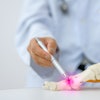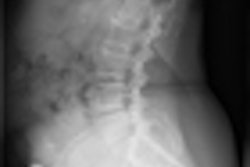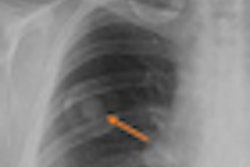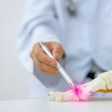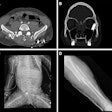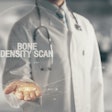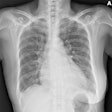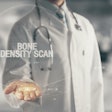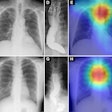A fast and easy way of calculating digital x-ray resolution promises to give medical physicists a better measure of digital radiography (DR) performance, according to a presentation at this week's American Association of Physicists in Medicine (AAPM) meeting.
The new approach was developed by medical physicists at the State University of New York, University at Buffalo, and was designed to bridge a gap between how DR resolution is measured in their scientific laboratory and the less-sophisticated way quality assurance testing is performed in the hospital. The study suggests the new technique may be appropriate for both settings.
Simplicity is the key to the new approach, according to Andrew Kuhls-Gilcrist, PhD, a former University at Buffalo postdoctoral researcher who presented the group's findings.
"We knew we were saving a lot of trouble and a lot of steps," he said in a telephone interview with AuntMinnie.com. "After further investigation, we discovered that the technique may be more accurate than the standard method as well."
In the AAPM study, an x-ray image intensifier, flat-panel digital detector, and solid-state x-ray image intensifier were calibrated to validate the new approach. In each case, the differences in the resolution between the new and standard techniques were equal to the size of the errors produced by the standard technique alone during image simulation.
Using the simplified approach, researchers observed agreement within 5% at the detector Nyquist frequency, and even better agreement at lower spatial frequencies.
"This indicates our new approach is very, very accurate," Kuhls-Gilcrist said.
Kuhls-Gilcrist was awarded an AAPM Junior Investigator Award for the study. Stephen Rudin, PhD, a professor of radiology at the University at Buffalo, was the principal investigator.
The new technique eliminates most of the hardware needed to measure modulation transfer function (MTF), a key measure of signal strength used to quantify image resolution. The standard approach calls for a precisely machined straight edge that blocks out x-rays for the test. Any edge imperfections or positioning error degrades measurement accuracy.
Testing often involves repeated trial-and-error to get the object into the correct position. Detector performance is rarely assessed during clinical quality assurance testing because the procedure is considered too time-consuming, Kuhls-Gilcrist said.
The new approach can measure MTF in about 10 minutes using a blank field-of-view or flat-field imaging instead of the standard test instruments. Early experience suggests that it is practically error proof, according to Kuhls-Gilcrist. Unlike the standard approach, the new test does not require a detailed knowledge about the physics of DR calibration.
Imaging data are uploaded into a computer, where custom software calculates MTF and detective quantum efficiency (DQE), a measure of radiation dose efficiency. The new test promises to produce more consistent results because site-to-site inconsistencies from the lack of test standardization are eliminated.
The decision to adopt instrumentation noise equivalent exposure (INEE) as a clinically relevant measure of system noise also potentially reaps benefits.
"It tells the physicist not to operate the system below a specific exposure level because image quality will be degraded because of suboptimal detector performance," Kuhls-Gilcrist said.
Research was performed at the Toshiba Stroke Research Center at the University at Buffalo. Rudin is co-director of the center's imaging division. Kuhls-Gilcrist recently moved to Tustin, CA, for an engineering position with Toshiba America Medical Systems.
By James Brice
AuntMinnie.com contributing writer
July 23, 2010
Related Reading
QA software automates CR reject analysis, December 23, 2009
Australian software automates data mining of CR dose, September 9, 2009
QA application can bolster DR image quality, consistency, December 22, 2008
Large CR study reveals wide variation in adult and pediatric protocols, September 3, 2008
PACS data-mining tool analyzes CR retake rates, August 5, 2008
Copyright © 2010 AuntMinnie.com
